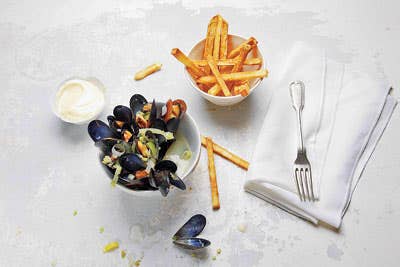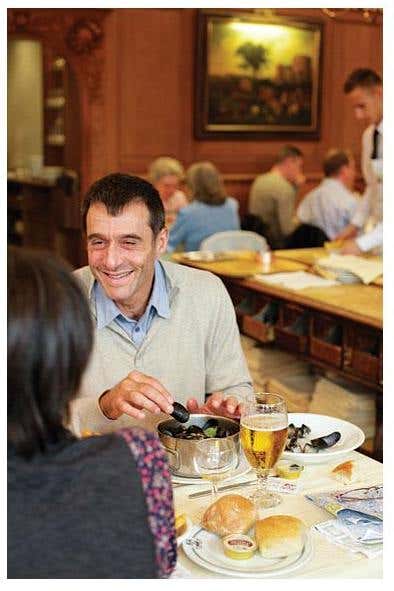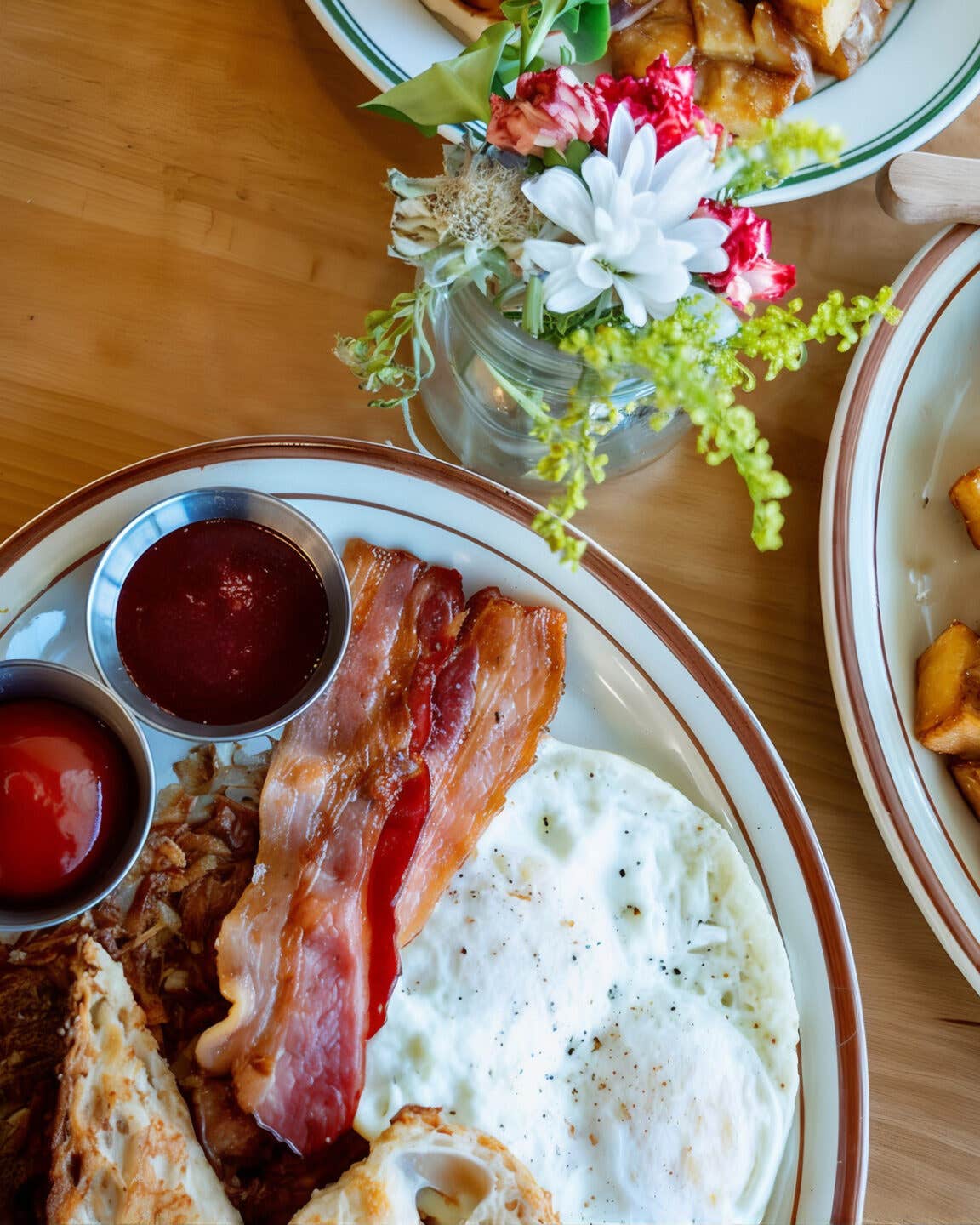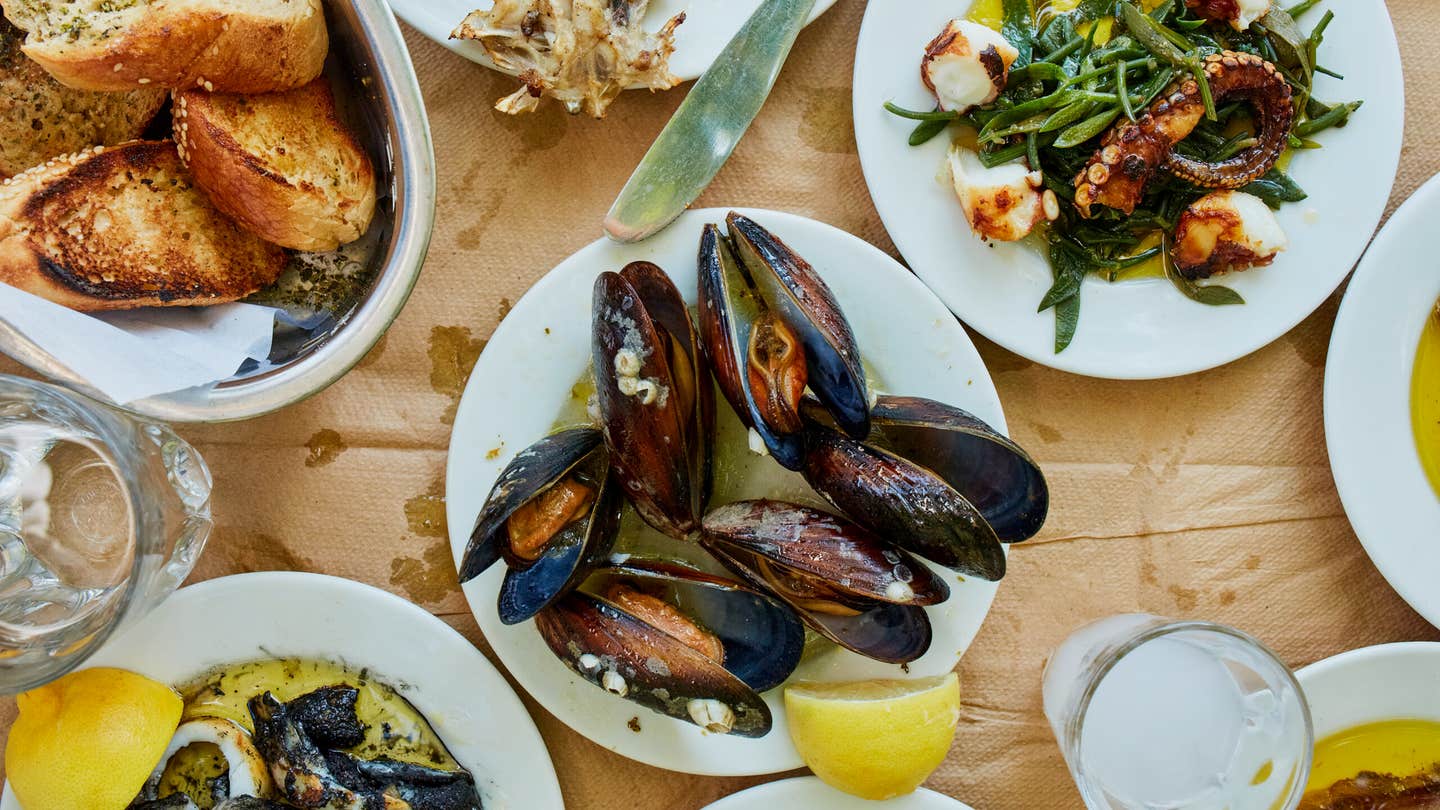
When I landed in Brussels last year, during a late-summer downpour, I had one goal in mind: to get myself some steaming hot mussels and crisp fries, or moules frites. In Belgium, steamed mussels and fried potatoes go together as naturally as fish and chips in England, and burgers and fries in the States. And if you ask me, the combination is one of the world's best comfort food pairings: the juicy, sweet, slightly briny mussels playing off the earthiness of the fries, with the occasional dip of the fries into mayonnaise providing an added note of richness.
You can find moules frites all over Europe, and certainly in France (where the meal is more often called moules et frites), but there's good reason to believe that the Belgians were the first to put the two foods together. Though the French have long laid claim to the fry, it was a Flemish manuscript, from 1781, that first cited something resembling frites—in this case, the potatoes that local cooks had long sliced into the shape of small fish and fried when no river fish was available during winter. Belgian farmers were some of the first in Europe to embrace the potato soon after it arrived in Europe from the New World, in the 16th century; by the 1600s, many had switched from growing wheat to raising potatoes.
Mussels are another Belgian staple. Cheap and plentiful, they were originally considered food for the poor, and they've long been paired with fried potatoes at the country's famous fry shops, known as friteries in French and freetkoten in Dutch, the language of Flemish Belgium. The number of friteries—and the popularity of moules frites—boomed after World War I, but nowadays these humble eateries are dedicated almost entirely to fried foods, as I discovered when I popped into Fritland, a popular hangout near Brussels' Bourse, or stock exchange. The frites were exemplary—crisp and lightly salted, and dark, just the way I like them ("bien cuit [well-done]!" shouted the young man who took my order)—but there was nary a mussel to be found in the place. It turns out that moules frites have migrated to fancier environs, like the city's bistros and restaurants. The meal is still a casual one, though, as groups of diners share bowls of fries and pots of mussels, using empty shells as tweezers to pluck the bivalves and ferry them to the mouth.
As I discovered on this last trip, moules frites is more of a genre than a single dish. Most menus offer a long list of options: Moules natures (simply steamed with aromatics like celery and leeks, plus a knob of butter) is the most basic and, in my opinion, the best way to appreciate the delicate flavor of the shellfish; but I can appreciate moules a la creme (steamed in white wine, enriched with cream), a l'ail (with sliced and minced garlic), au vin blanc (with white wine), and more. And I love the recent trend of infusing the steaming liquid with flavorful add-ins, from curry powder and the smoky chile known as piment d'Espelette to Pernod liquor (which adds a delicate anise perfume) and Belgian beer (for a bready, hoppy depth). Another moules frites rule I learned: Though friteries serve dozens of different sauces with their fries, flavored with everything from fresh herbs to ketchup, when you order moules frites, the mayonnaise is always plain.

As much as chefs experiment with classic and creative takes on the dish, the cooking technique varies little from place to place. For my order of moules natures at Jaloa, a trendy new bistro in the northern part of town, the chef put two pounds of mussels into a lightweight, black enamel pot. After he added some vegetable broth and a bit of butter, on went the rounded cover (which doubles as a receptacle for empty shells once the pot is brought to the table). Placing the pot on high heat, he waited a minute, then gave it a strong up-and-down shake so the mussels would cook evenly. He repeated this shake several times while the mussels cooked over the course of five minutes; meanwhile, an assistant sliced yellow-fleshed potatoes and fried them in oil at a fairly low temperture until they were limp. After they were drained, the fries were dipped back into the fryer at a higher temperature, this second frying making them crisp and golden on the outside, fluffy and tender within.
As I savored the dish, I realized that it is the freshness of the mussels and the excellent quality of those potatoes—a flavorful, high-starch variety called bintjes—that make moules frites so superlative at their source. The most prized mussels in Belgium come from the Schelde, a shallow river that connects western Belgium to the Netherlands and the North Sea. Though they're in season from late summer to early spring, most chefs use farm-raised ones from Zeeland in the Netherlands, one of Europe's largest exporters of mussels. You also see moules bouchots, French mussels raised on rope-sheathed posts in the sea, offered on Belgian menus. They tend to be more expensive, smaller in size, and very delicate in flavor.
I had moules frites again for dinner at Royal Brasserie, a contemporary-looking place that serves classic Brussels dishes not far from Jaloa. This time I ordered the mussels in white wine—a rivaner, explained the waiter, a dry white made from crisp Muller-Thurgau grapes. The wine imparted a pleasant acidity, but this version also had tender bits of celery, onion, and leek clinging to the mussels, adding a delicate perfume and vegetal brightness. The fries were slightly thinner than others I'd tasted—a boon, I decided, since the overall increased surface area maximized crunch.
The following day, I sampled more moules frites around town, including a version spiked with cream at Aux Armes de Bruxelles, a classic bistro opened in 1921. And when I got home to New York, I was eager to test out what I'd learned. I bought the best ingredients I could find: sweet, plump, farm-raised mussels from Prince Edward Island, and Yukon Gold potatoes, to approximate Belgium's flavorful bintjes. I started with the fries first, slicing the potatoes thinner than is the fashion at most fry shops for crispier results. I whipped up a mayonnaise with fresh egg yolks and a touch of wine vinegar. While my potatoes were frying, I followed the advice of Royal Brasserie's chef, who told me that unless he was using wine or cream, he steamed his mussels with aromatic vegetables, a bit of butter, and no additional liquid. When I did the same, I noticed the liquor released from the bivalves was intensely flavorful, but there wasn't as much broth in the pan as I like, so I added a touch of white wine with the next batch. The result was so good, I decided to forgo additional flavorings; maybe next time I'd add some Pernod or curry. And then I sat down to my meal and imagined I was back in Brussels on that rainy day.
Keep Reading
Continue to Next Story










